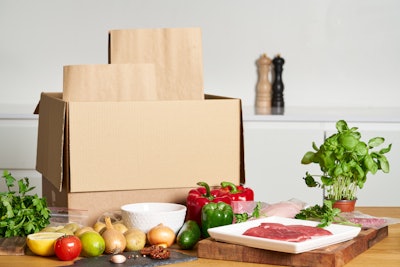
The food industry is worth 8% of GDP in the United States, which equates to $1.77 trillion. According to US Department of Agriculture data, 2010 was the first year U.S. consumers spent more than half of their food allowance away from home. Restaurant businesses were booming.
In 2019, 55% of that allowance was spent in restaurants, and in 2020, this dropped to 48%. Within one year, people reverted to a consumption pattern not seen since the end of the 1990s.
As the pandemic unfolded, consumer behavior changed in fundamental ways, including the way they eat. The jury is still out on which changes will last and which will disappear, but one thing is certain -- there will be a lot of volatility in consumer behavior from here on out.
As consumers develop new habits, the battle lines between foodservice establishments and grocery stores are becoming increasingly blurry, with businesses endeavoring to meet new demands. Moving forward, the technologies adopted and shifts in service norms will continue, meaning businesses must once again adapt to new normals in consumer behavior.
How restaurants, grocery stores and delivery services can innovate to win consumers
A 1% shift in consumption patterns on food represents about $17 billion in annual sales. The value of food away from home (FAFH) dropped by a staggering $155 billion in the United States alone in 2020, according to US Department of Agriculture figures. The lucrative nature of the food sector means that restaurants will fight back with determination and grocery stores will fiercely defend the ground they’ve gained.
More recently, delivery services wedged themselves into the middle, with companies now delivering food to homes from grocery stores and restaurants. Statista estimate that revenue in the U.S. online food delivery segment will grow by more than 11% this year, reaching over $66,565 million.
As the pandemic thermometer changes almost daily, the food industry will continue to innovate.
Key areas ripe for innovation
- Cooking en route. Expect a hybrid between food trucks and delivery cars, which cook dishes on the way to the customer, arriving freshly cooked right from the kitchen.
- Smarter meals. Packaging will be optimized so that multi-component meals will cook evenly and taste great, simply by following the preparation instructions.
- Faster foods. Look for a trend toward foods that taste good without any preparation at all.
- Evolved meal kits. Grocery stores will introduce home meal kits with easy-to-follow instructions from their entire range of products.
Consumers always seek a balance between taste and time. The Economist claims most UK consumers like to spend 20 minutes on food preparation at home. These 20 minutes are a compromise between the time we’re willing to spend on food preparation and the quality of food we eat.
Developing delicious recipes and functional packaging will require better software for R&D processes. And, consistently achieving great taste will mean narrowing ingredient specifications using automated quality assurance, sourcing and merchandising. This is where the food sector will benefit from industry-leading product lifecycle management (PLM) systems.
With consumer habits shifting all the time and small margins potentially leading to huge profits or losses, businesses in the food industry must get their products right first time. If they don’t, consumers have shown that they’ll spend their dollars elsewhere.


















![Pros To Know 2026 [color]](https://img.sdcexec.com/mindful/acbm/workspaces/default/uploads/2025/08/prostoknow-2026-color.mduFvhpgMk.png?ar=16%3A9&auto=format%2Ccompress&bg=fff&fill-color=fff&fit=fill&h=135&q=70&w=240)
